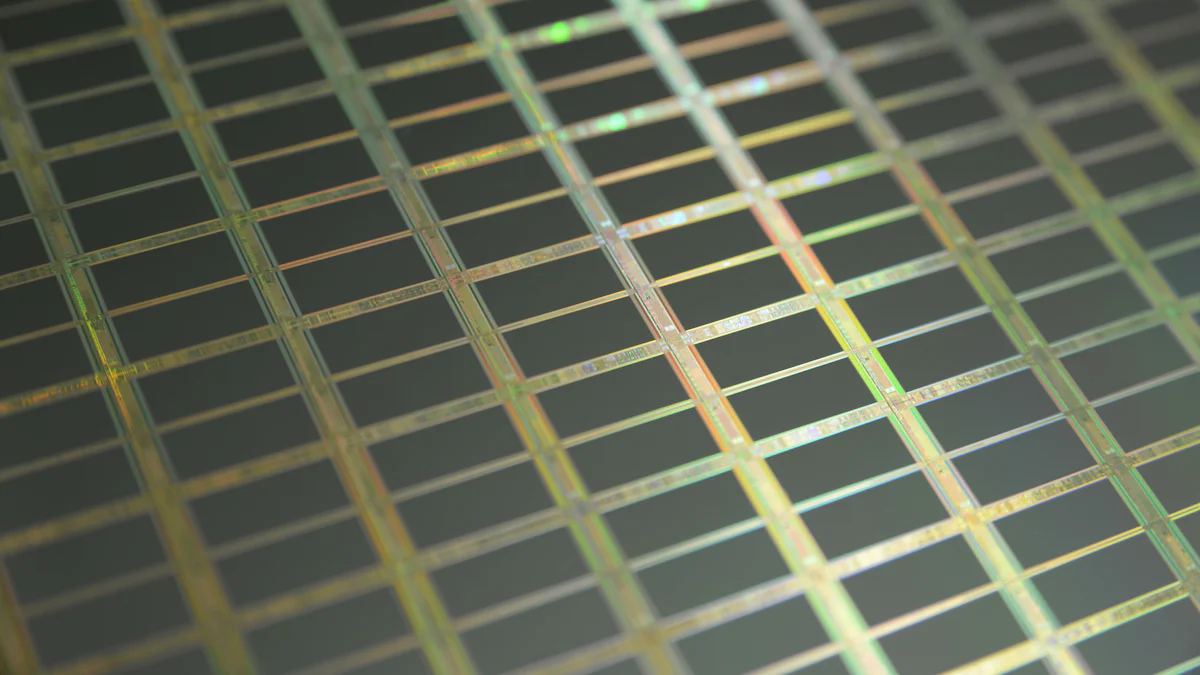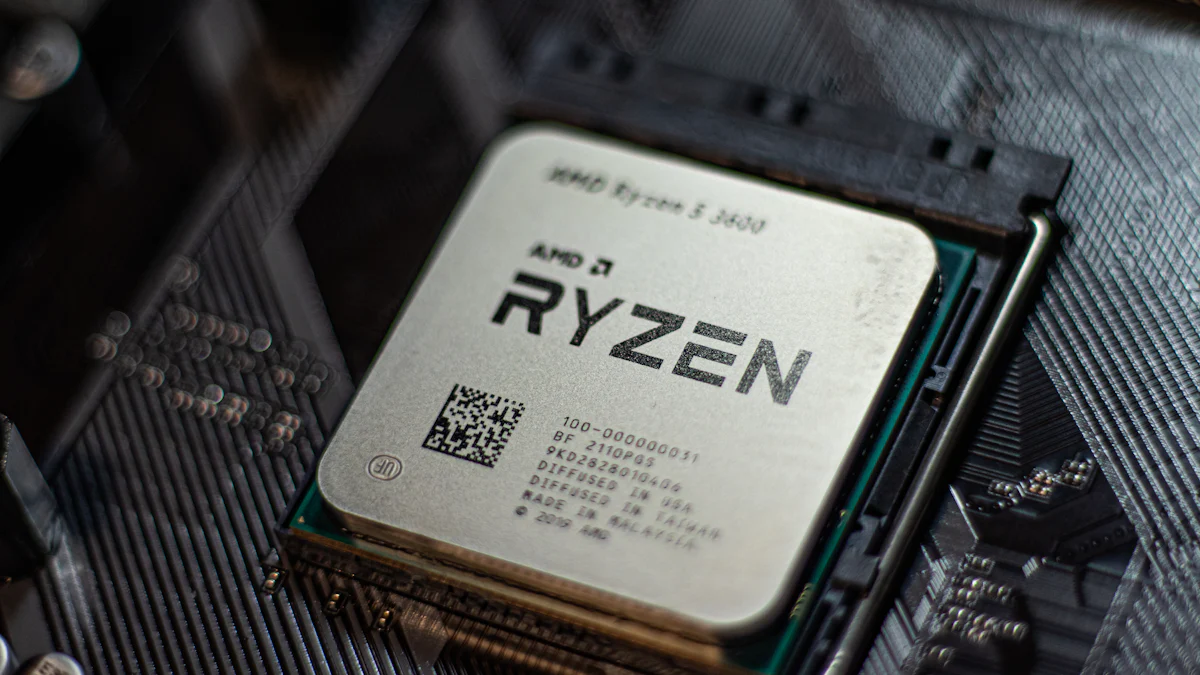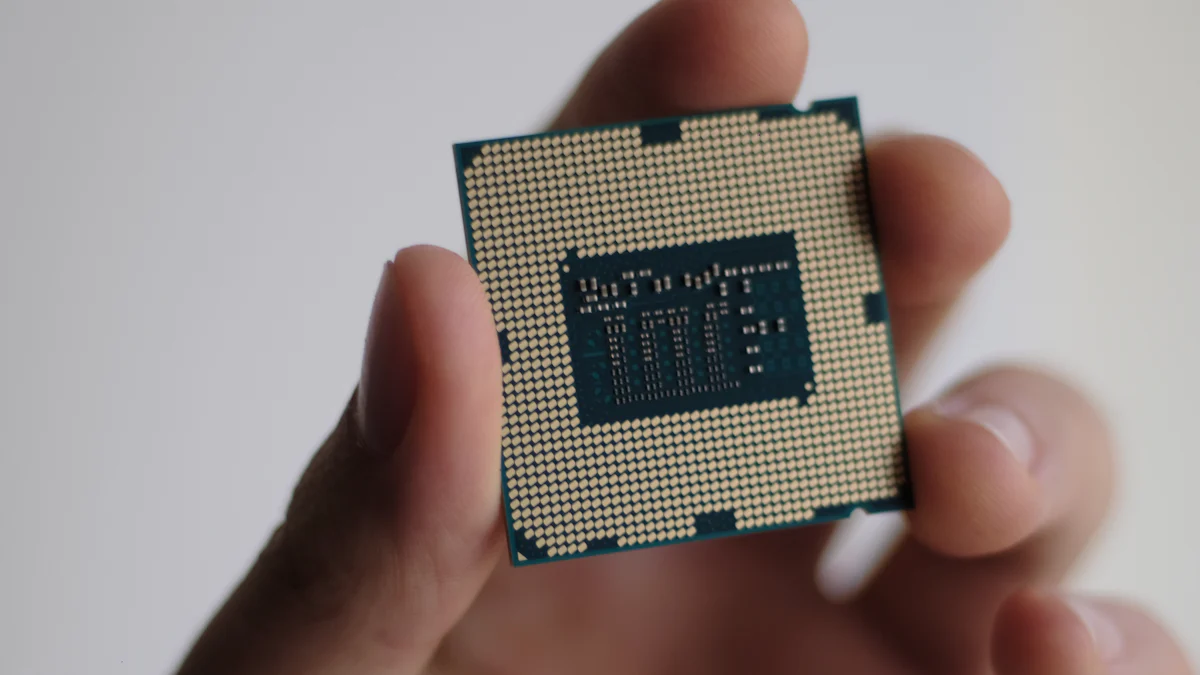Wichtige Trends, die den Markt für Siliziumkarbid-beschichtete Suszeptoren im Jahr 2025 prägen werden

Silicon carbide coated susceptors eine spielerische Rolle in der Halbleiterfertigung spielen. Sie sind essentiell für Prozesse wie chemische Dampfabscheidung (CVD), wo Präzision und Haltbarkeit kritisch sind. Im Jahr 2023 wurde der Markt für diese Angreifer mit $175.3 Mio, und es wird erwartet, bis 2033 auf $595.5 Millionen. Dieses Wachstum spiegelt die steigende Nachfrage nach energieeffizienten Leistungsgeräten und fortschrittlichen Halbleitertechnologien wider.
Also, was treibt diese Operation? Einige wichtige Trends zeichnen sich aus. Verbesserte thermische Leistung ist eine große. SiC-Beschichtungen zeichnen sich durch Wärmemanagement aus und machen sie perfekt für Hochtemperaturanwendungen. Ein weiterer Trend ist der wachsende Einsatz SiC coated susceptors in fortschrittlichen Verpackungs- und CVD-Prozessen. Darüber hinaus gibt es einen starken Schub für Nachhaltigkeit, mit Herstellern, die sich auf umweltfreundliche Lösungen und langlebige Materialien konzentrieren.
Diese Trends gestalten nicht nur den Markt – sie verwandeln die gesamte Halbleiterindustrie. Während wir in 2025, Siliziumkarbid beschichtete Suszeptoren werden weiterhin neu definieren, was in Technologie und Innovation möglich ist.
Wichtigste Erkenntnisse
- Silicon carbide coated susceptors sind wichtig für die Herstellung von Halbleitern. Sie helfen bei der Hitzekontrolle und länger.
- Der Markt für diese Angreifer wächst schnell. Es kann $595.5 Millionen bis 2033 aufgrund der energiesparenden Technologiebedarf erreichen.
- Neue Beschichtungsmethoden, wie sehr dünne schichten und bessere techniken, machen halbleiter besser und schneller arbeiten.
- Ökofreundliche Ideen, wie die grüne Fertigung und die Wiederverwendung von Materialien, sind jetzt sehr wichtig.
- Asia-Pacific wird ein großer Ort für diese Produkte. Dies ist auf ein schnelles Wachstum in Fabriken und neuer Technologie zurückzuführen.
Emerging Trends im Silicon Carbide Coated Susceptors

Ausschreibungen in Coating Technologies
Innovationen in Abscheideverfahren
Lassen Sie uns über die Entwicklung von Beschichtungstechnologien sprechen. Neue Abscheideverfahren wie thermisches Sprühen und physikalische Aufdampfen (PVD) machen Wellen. Diese Techniken verbessern die haltbarkeit und thermische leistung aus Siliziumkarbid beschichteten Suszeptoren. Forscher erforschen sogar nanoskalige Beschichtungen, um die Materialleistung zu steigern. Induktive Heizdesigns sind eine weitere spannende Entwicklung. Sie sorgen für eine präzise Energieeffizienz, die bei der Produktionskonsistenz und Kostenersparnis hilft. Mit diesen Fortschritten wird erwartet, dass der Markt stetig wächst 5% CAGR von 2024 bis 2031.
Entwicklung ultradünner, hochpräziser Beschichtungen
Ultradünne, hochpräzise Beschichtungen sind ein Spielwechsler. Sie verbesserung der thermischen stabilität und chemischen beständigkeit, die für die Halbleiterherstellung kritisch sind. Diese Beschichtungen wirken als starke Barriere gegen Korrosion und Oxidation und halten Wafer während der Epitaxie intakt. Außerdem reduzieren sie Fehler und verbessern die Substratqualität. Dies bedeutet höhere Ausbeuten und hochwertigere Halbleiter. Die verbesserte Kontrolle über Abscheideprozesse sorgt auch für weniger Unstimmigkeiten, wodurch diese Beschichtungen für die Hersteller ein Must-Have sind.
Verbesserte thermische und mechanische Leistung
Verbesserte Wärmebeständigkeit für Hochtemperaturanwendungen
Siliconcarbidbeschichtungen sind für ihre außergewöhnliche Wärmebeständigkeit bekannt. Sie können Thermoschock und Oxidation wie Pros behandeln. Induktiv beheizbare Designs verteilen Wärme gleichmäßig und beseitigen Temperaturgradienten, die Produktqualität ruinieren könnten. Auch Materialien wie SiC-beschichteter Graphit werden verstärkt. Sie absorbieren und verteilen Wärme effizient, was für die Herstellung hochwertiger Halbleiterscheiben entscheidend ist.
Überlegene mechanische Festigkeit für längere Haltbarkeit
Die mechanische Festigkeit ist ebenso wichtig wie die thermische Leistung. Stärkere Materialien widerstehen thermischer Schock und zyklische Belastungen besser. Das bedeutet, dass sie ihre Struktur auch unter harten Bedingungen beibehalten. Das Ergebnis? Längere Lebensdauer und geringere Wartungskosten. Verbesserte Haltbarkeit reduziert auch Mängel und sorgt für gleichbleibende Leistung im Laufe der Zeit.
Nachhaltigkeitsinitiativen
Umweltfreundliche Fertigungsprozesse
Nachhaltigkeit wird in der Branche Priorität. Energieeffiziente Designs helfen Herstellern dabei, ihren CO2-Fußabdruck zu senken. Zum Beispiel SiC-beschichtete MOCVD-Suszeptoren verbesserung der prozesseffizienz und senkung des energieverbrauchs. Fortgeschrittene Materialien und Beschichtungen bleiben auch länger, was weniger Abfall bedeutet. Diese Innovationen ebnen den Weg für umweltfreundlichere Herstellungspraktiken.
Recycling und Wiederverwendung von Siliziumkarbidwerkstoffen
Recycling von Siliziumkarbidmaterialien ist ein weiterer Schritt in Richtung Nachhaltigkeit. Langlebige SiC Tiegel abfall und ressourcen sparen. Ihre überlegene Wärmeleitfähigkeit senkt auch den Energieverbrauch während des Sinterprozesses. Durch die Verlängerung der Lebensdauer dieser Materialien können die Hersteller den Bedarf an neuen Rohstoffen deutlich reduzieren. Dies spart nicht nur Ressourcen, sondern minimiert auch die Umweltauswirkungen der Produktion.
Marktdynamik 2025
Regionales Wachstum und Dominanz
Asia-Pacific als Fertigungsstandort
Asia-Pacific führt die Ladung im Siliziumkarbid beschichteten Suszeptor Markt. Diese Region wird erwartet rund 351TP3 T des Marktanteils bis 2025. Warum? Schnelle Industrialisierung und Spitzentechnologie sind die Antriebskräfte. Länder wie China, Japan und Südkorea sind an der Spitze und machen Asia-Pacific zu einem globalen Fertigungszentrum. Der Fokus der Region auf Innovation und Effizienz ist ein Kraftwerk für die Halbleiterproduktion.
Investitionen in Nordamerika und Europa
Auch Nordamerika und Europa steigen an. Diese Regionen sehen erhebliche Investitionen in fortschrittliche Halbleitertechnologien. Deutschland, Frankreich und das Vereinigte Königreich führen den Weg in Europa, während Nordamerika bemerkenswerte Beiträge leistet. Diese Investitionen helfen, den Markt zu diversifizieren und globale Lieferketten zu stärken.
| Region | Schlüsselländer |
|---|---|
| Asia-Pacific | China, Japan, Südkorea |
| Europa | Deutschland, Frankreich, Vereinigtes Königreich |
| Nordamerika | Bezeichnete Beiträge |
Erweiterung von Anwendungen
Halbleiterwaferverarbeitung
Siliziumkarbid beschichtete Anfälligkeiten sind essential in semiconductor wafer processing. Sie sorgen für Stabilität und verhindern Verunreinigungen bei der chemischen Aufdampfung (CVD). Ihre ausgezeichnete thermische Stabilität und chemische Beständigkeit machen sie ideal für anspruchsvolle Fertigungsbedingungen. Diese Suszeptoren reduzieren auch Defekte und verbessern die Substratqualität, was zu höheren Ausbeuten führt.
- Suszeptoren stabilisieren Substrate in CVD-Geräten.
- Sie ermöglichen eine epitaktische Abscheidung und verhindern eine Verunreinigung.
- Ihre thermische Stabilität verbessert MOCVD Prozesseffizienz.
Photovoltaik- und LED-Industrie
Auch die Photovoltaik- und LED-Industrie profitiert von diesen fortschrittlichen Suszeptoren. In der Photovoltaikbranche sind sie wärmemanagement und effizienz verbessern während der Zellproduktion. Für LEDs sorgen sie für eine präzise Heizung, was zu einer besseren Qualität und Leistung führt. Diese Anwendungen unterstreichen die Vielseitigkeit von siliciumcarbidbeschichteten Suszeptoren.
- Verbessern Sie das thermische Management in der Photovoltaik-Zellenfertigung.
- Erleichtern Sie eine präzise Heizung für hochwertige LED-Komponenten.
End-User Trends
Halbleiterhersteller als Primärverbraucher
Halbleiterhersteller sind die größten Nutzer silicon carbide coated susceptors. Sie verlassen sich auf diese Materialien für ihre überlegene thermische Stabilität und chemische Beständigkeit. Auch die Verschiebung auf breitbandige Halbleiter wie Siliziumkarbid und Galliumnitrid ist gefragt. Diese Materialien sind für energieeffiziente Technologien und fortschrittliche Fertigungsprozesse kritisch.
- Technologische Fortschritte bei der Nachfrage nach Halbleiterbaubrennstoffen.
- Breitband-Halbleiter wie SiC und GaN benötigen innovative Lösungen.
Steigende Nachfrage aus erneuerbaren Energiesektoren
Der Sektor Erneuerbare Energien ist ein weiterer wichtiger Akteur. Mit dem Fokus auf Nachhaltigkeit wendet sich diese Industrie an siliciumkarbidbeschichtete Anfälligkeiten für ihre energieeffiziente eigenschaften. Diese Suszeptoren verbessern die Leistung von Leistungselektronik und erneuerbaren Energiesystemen und machen sie für die Zukunft von sauberer Energie unverzichtbar.
- Erneuerbare Energiesysteme benötigen leistungsstarke Halbleiterbauelemente.
- SiC-beschichtete Suszeptoren verbessern Prozesseffizienz und Geräteleistung.
Herausforderungen und Chancen
Kosten- und Produktionsengpässe
High production costs
Seien wir ehrlich – die Herstellung von Siliziumkarbid beschichtete Suszeptoren ist nicht billig. Die beteiligten Materialien und Prozesse erfordern erhebliche Investitionen. Hochwertige Rohstoffe, wie Siliziumkarbid und Graphit, kommen mit steilen Preisschildern. Darüber hinaus ergänzen strenge Qualitätskontrollstandards den Gesamtaufwand. Diese Faktoren machen es für Hersteller schwierig, die Kosten zu senken, während die Qualität der Spitzennotch zu erhalten.
Skalierung der Produktion nach Bedarf
Die wachsende Nachfrage nach diesen Angreifern ist eine weitere Hürde. Die Skalierung der Produktion ist nicht so einfach wie ein Schalter. Forschungseinrichtungen in China arbeiten hart daran, Produktionsprozesse zu verbessern. Sie konzentrieren sich auf die Verbesserung der Beschichtungsreinheit und Gleichmäßigkeit bei der Verlängerung der Lebensdauer von SiC-Beschichtungen. Auch intelligente Fertigungsprozesse werden erforscht, um die Effizienz zu steigern. Diese Bemühungen zielen darauf ab, die Kosten zu senken und die Bedürfnisse des Marktes für Hochleistungsgeräte zu erfüllen.
- Investitionen in die Industrialisierung von SiC-beschichteten Graphitsubstraten nehmen zu.
Innovation und Zusammenarbeit
Kontinuierliche FuE-Vorteile
Forschung und Entwicklung spielen dabei eine große Rolle. Unternehmen sind ständig innovieren, um thermische Stabilität, chemische Beständigkeit und mechanische Festigkeit zu verbessern. Diese Fortschritte machen Siliziumkarbid beschichtete Suszeptoren zuverlässiger und effizienter für die Halbleiterherstellung. Sehen Sie sich diese Aufschlüsselung der FuE-Leistungen an:
| Aspect | Beschreibung |
|---|---|
| Thermische Stabilität | SiC-beschichtete Suszeptoren bieten überlegene thermische stabilität im vergleich zu herkömmlichen materialien. |
| Chemical Resistance | Eine verbesserte chemische Beständigkeit trägt zu einer längeren Lebensdauer und Zuverlässigkeit bei. |
| Mechanische Kraft | Eine verbesserte mechanische Festigkeit führt zu einer höheren Prozesseffizienz und Ausbeute bei der Halbleiterherstellung. |
Partnerschaften zwischen Industrie und Wissenschaft
Zusammenarbeit ist ein weiterer Schlüssel zum Erfolg. Partnerschaften zwischen Unternehmen und Universitäten fördern Innovation. Wissenschaftliche Forschung führt oft zu Durchbrüchen in Materialien und Prozessen. Diese Kollaborationen helfen Herstellern, wettbewerbsfähig zu bleiben und die Grenzen des Möglichen zu drängen.
Resilienz der Lieferkette
Abhängigkeit von der Verfügbarkeit von Rohstoffen
Die Lieferkette für siliciumcarbidbeschichtete Suszeptoren steht vor eigenen Herausforderungen. Rohstoffe wie Siliciumcarbid und Graphit sind teuer und nicht immer leicht zu quellen. Eine begrenzte Produktionskapazität ergänzt das Problem. Hersteller müssen auch strenge Qualitätsstandards erfüllen, die die Produktion verlangsamen können. Hier ist ein kurzer Blick auf die wichtigsten Supply Chain-Probleme:
| Challenge | Beschreibung |
|---|---|
| Hohe Rohstoffkosten | Wesentliche Aufwendungen für die Beschaffung von Materialien für die Produktion. |
| Begrenzte Produktionskapazität | Unzureichende Fertigungsmöglichkeiten, um die Nachfrage zu erfüllen. |
| Strenge Qualitätskontrollanforderungen | Strenge Standards, die während der Produktion eingehalten werden müssen. |
Potenzial für lokalisierte Produktion
Eine Möglichkeit, diese Herausforderungen zu bewältigen, ist die Lokalisierung der Produktion. Durch die Schaffung von Fertigungsanlagen näher an Rohstoffquellen können Unternehmen Kosten senken und die Effizienz der Lieferkette verbessern. Lokalisierte Produktion hilft auch, Störungen durch globale Supply Chain Probleme zu minimieren. Es ist ein kluger Schritt, um langfristige Widerstandsfähigkeit zu gewährleisten.
Zukunftsausblick für Silicon Carbide beschichtete Suszeptoren

Industrietransformation
Halbleiterherstellungsprozesse neu definieren
Siliziumkarbid beschichtete Suszeptoren ändern, wie Halbleiter hergestellt werden. Sie machen Prozesse wie epitaktisches Wachstum effizienter und zuverlässiger. Diese Angreifer haben hohe wärmeleitfähigkeit und widerstand gegen thermischen schock. Das bedeutet, dass sie schneller und gleichmäßiger aufheizen, was Zeit spart und Kosten senkt. Sie auch fehler reduzieren und die qualität der substrate verbessern. Hersteller erhalten höhere Erträge und bessere Ergebnisse. Außerdem hält ihre Beständigkeit gegen Oxidation und Korrosion sie auch unter schwierigen Bedingungen stark.
Hier ist, wie sie die Branche transformieren:
- Sie verbessern die Qualität epitaktischer Schichten.
- Sie reduzieren Produktionszeit und Betriebskosten.
- Sie sorgen für ein gleichmäßiges Wachstum und minimieren Fehler.
Langfristige Auswirkungen auf verwandte Branchen
Die Wirkung von siliciumcarbidbeschichteten Suszeptoren geht über Halbleiter hinaus. Industrien wie Solarenergie und LEDs profitieren ebenfalls. Diese Angreifer unterstützen energieeffiziente Technologien, die in hohem Bedarf sind. Wenn der Markt wächst, werden wir nachhaltigere Lösungen und fortschrittliche Materialien annehmen. Diese Verschiebung wird die Innovation in mehreren Sektoren vorantreiben, was diese Angreifer zu einem Eckpfeiler der modernen Technologie macht.
Marktwachstumsprojektionen
Voraussichtliche CAGR und Marktbewertung
Der mit Siliziumkarbid beschichtete Suszeptormarkt ist auf einer steilen Wachstumskurve. Bis 2025 wird mit einer jährlichen Wachstumsrate (CAGR) von 15.5% erwartet. Allein das Segment SiC Coated Graphite Susceptor wird von 2025 bis 2031 bei 7.7% CAGR wachsen. Diese schnelle Expansion spiegelt die steigende Nachfrage nach Hochleistungsmaterialien in der Halbleiter- und Solarindustrie wider.
Wettbewerbsfähige Landschaft und aufstrebende Spieler
Der Markt schwankt mit Aktivität. Gegründete Spieler wie Toyo Tanso, SGL Carbon und Tokai Carbon führen die Ladung. Auch aufstrebende Konkurrenten wie HenergySolar und ZhiCheng Semiconductor machen Wellen. Diese konkurrenzfähige Landschaft treibt Innovation voran und drängt die Grenzen dessen, was möglich ist. Mit so vielen Spielern im Spiel sieht die Zukunft hell auf Siliziumkarbid beschichtete Angreifer.
Der mit Siliziumkarbid beschichtete Suszeptor-Markt entwickelt sich schnell, und 2025 verspricht ein entscheidendes Jahr zu sein. Wir haben gesehen, wie Fortschritte in Beschichtungstechnologien, verbesserte wärmeleistung, und Nachhaltigkeitsinitiativen gestalten die Branche neu. Diese Trends treiben Innovation und schaffen spannende Möglichkeiten für Hersteller.
Das Wachstumspotenzial des Marktes ist unbestreitbar. Mit einem projizierten CAGR von 15.5% wird die Industrie bis 2033 auf $595.5 Mio. erreichen. Regionen wie Asien-Pazifik, Nordamerika und Europa führen die Gebühren, die 35%, 30% und 25% des Marktanteils erfassen. Dieses Wachstum wird gefördert durch:
- Technologische Fortschritte in SiC Beschichtungen.
- Steigende Nachfrage nach energieeffizienten Technologien.
- Innovationen in der Materialeffizienz und Wärmeleistung.
Also, wie können Unternehmen weitermachen? Hier sind ein paar Strategien:
- Fokus auf hochleistungshalbleiter.
- Investieren Sie in epitaktische Wachstumstechnologien.
- Entwickeln Sie Next-Gen Materialien mit verbesserten Eigenschaften.
- Tragen Sie Nachhaltigkeit und Umweltstandards ein.
- Integration fortschrittlicher Überwachungssysteme für bessere Effizienz.
Der mit Siliziumkarbid beschichtete Suszeptor-Markt wächst nicht nur – es verwandelt Industrien wie Halbleiter, Solarenergie und LEDs. Vor diesen Trends zu bleiben bedeutet Innovation und Anpassung an die sich verändernde Landschaft. Die Zukunft sieht hell aus, und ich kann nicht warten zu sehen, wie dieser Markt die Technologie von morgen weiter prägt.
FAQ
Wofür werden Siliziumkarbid beschichtete Suszeptoren verwendet?
Silicon carbide coated susceptors für die Halbleiterherstellung wesentlich sind. Sie stabilisieren Wafer bei Prozessen wie der chemischen Aufdampfung (CVD). Ihre Hitzebeständigkeit und Haltbarkeit machen sie perfekt für Hochtemperaturanwendungen, um hochwertige Halbleiter zu gewährleisten.
Warum ist Siliciumcarbid besser als andere Materialien?
Siliziumkarbid steht für seine unglaubliche Wärmebeständigkeit und mechanische Festigkeit. Es behandelt extreme Temperaturen ohne Abbruch. Außerdem widersteht es Oxidation und Korrosion, so dass es länger dauert als herkömmliche Materialien wie Graphit.
Wie unterstützen diese Angreifer Nachhaltigkeit?
Sie bleiben länger, reduzieren Abfall. Hersteller recyceln auch Siliciumcarbid Materialien, um Ressourcen zu erhalten. Energieeffiziente Designs senken den Stromverbrauch während der Produktion und machen diese Angreifer eine grünere Wahl.
Welche Branchen profitieren am meisten von siliciumcarbidbeschichteten Suszeptoren?
Halbleiterhersteller verlassen sich auf sie für die Waferverarbeitung. Die Photovoltaik- und LED-Branche nutzen sie auch, um das thermische Management und die Effizienz zu verbessern. Sie sind für energieeffiziente Technologien unerlässlich.
Was treibt das Marktwachstum für diese Angreifer an?
Die Nachfrage nach fortschrittlichen Halbleitern und nach erneuerbaren Energielösungen ist skyrocketing. Innovationen in Beschichtungstechnologien und ein Schub für Nachhaltigkeit treiben dieses Wachstum voran. Regionen wie Asia-Pacific führen die Ladung mit schneller Industrialisierung.